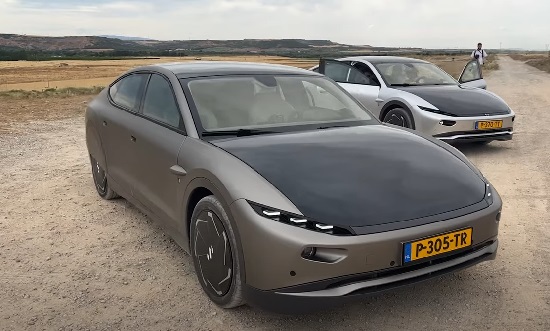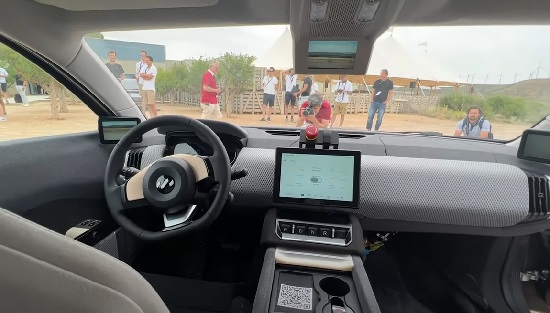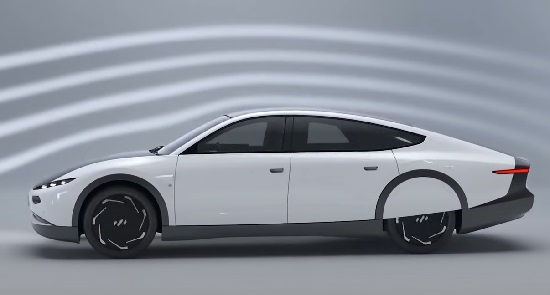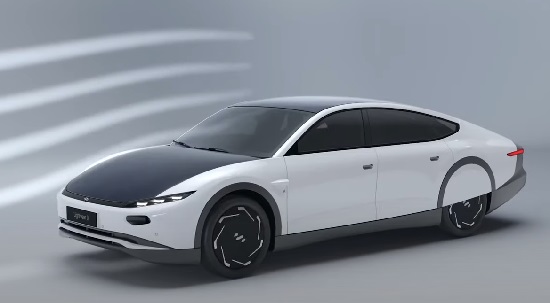
Lightyear O 2025.
The Lightyear O solar car: the start of small-scale production.
The Lightyear company from the Netherlands has done it after all! It has developed and brought to production — albeit small-scale — its first electric car with solar panels.
The members of the Solar Team from Eindhoven were at the origin of this startup.
They regularly participated (and won three times) in the Bridgestone World Solar Challenge solar-powered electric car competition.
And in 2016 they decided to use their experience to create a civilian car capable of being charged by the sun.
The first prototype, called Lightyear One, was presented in the summer of 2019, and then it was announced that production of commercial cars would begin in two years.
It was not possible to keep to the schedule because of the pandemic and the lack of financing, but the problems were eventually overcome.
Last September, the Dutch consortium Invest-NL invested 81 million euros in the project.
This is a modest sum by the standards of the automobile industry, but it was just enough to start small-scale production at the Finnish factory Valmet, which has been engaged in contract assembly of various cars for many years (in the nineties, even Russian Lada Samara cars were made there).

The serial sun-car is called Lightyear O, but in general it repeats the prototype of three years ago.
It is a huge liftback with a length of 5083 mm and a width of 1972 mm. Such dimensions are necessary not so much for solidity, as to increase the area of solar panels: it reaches five square meters!
Photovoltaic cells are located on the hood, roof and fifth door. The cells are covered with durable glass, which can withstand the weight of an adult.
Engineers have worked well on aerodynamics: with a Cd ratio of 0.175, this liftback has become the most streamlined road car in history.

For example, the Mercedes-Benz EQS electric car has an aerodynamic drag coefficient of 0.2, and the small-series «soapbox» Volkswagen XL1 has 0.189.
For this reason they had to remove rear-view mirrors (instead of them cameras), make «smooth» wheel covers, and close the rear wheels with additional removable shields.
But they didn’t sacrifice a ground clearance: there is an impressive 183 mm.
The body is made by a contractor in the UK, and exterior panels are made of carbon fiber.
A huge sloping tail, beneficial both for placement of solar panels, as well as for stabilization of air flow, for some reason was not too roomy: the volume of the trunk — only 474 liters, and with the folded rear seats — 1,076 liters.

Lightyear O can use energy of the sun, but first of all it is an electric car, and with unusual construction.
It is equipped with four motor-wheels, which in total produce 177 hp, and the torque on the wheels is 1720 Nm.
So the narrow tires are here not only to reduce rolling resistance, but also to reduce unsprung masses, which are very high with motor-wheels.
There is a traction battery with a capacity of 60 kW̊∙h under the cabin floor. The full charge should be enough for as much as 625 km of mileage in the cycle WLTP.
Moreover, removal of the aforementioned shields on the rear wheels will reduce the range by 12 km at once.
And what about the solar energy? The power of all cells on the body is only 1,05 kW. The developers conducted tests in the south of Spain and assure that in spring and summer at these latitudes, the solar battery can provide a battery charge for 70 km in a day.

But in less sunny regions of the world this value will be much more modest.
Therefore, the Lightyear O is also equipped with a conventional AC and DC charger: the «fast» terminal can be used to charge 520 km in one hour.
The five-seat liftback interior is designed modestly and made with synthetic materials and recycled plastic.
Screens here replace not only the side, but also the center rear view mirror, and the media system on the Android platform has a 10.1-inch display.
On the central console there are only the keys for the transmission and emergency lights.
The extensive use of composite materials allowed to make this huge electric car light: only 1575 kg, 350 kg of which go to the traction battery.
But the dynamics of Lightyear O does not impress: the acceleration time to «hundred» — ten seconds, the maximum speed — 160 km/h.
You can already order Lightyear O on the website of the company, but the price is 250,000 euros! Three years ago, the developers promised half as much.
However, the development of the next «solar» model Lightyear 2 has already started and it is expected to cost from 30 thousand euros.
So far, only a teaser has been published, and the premiere is scheduled for 2025.



 Posted in
Posted in  Tags:
Tags: